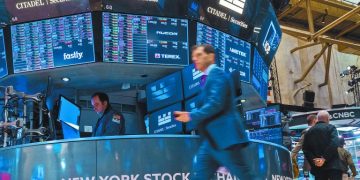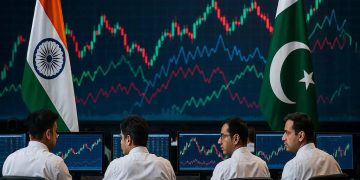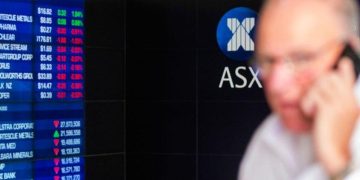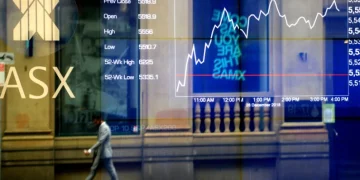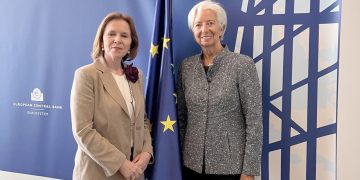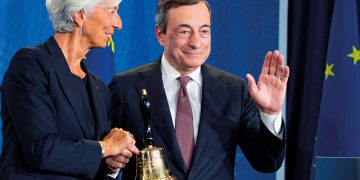The European Central Bank (ECB) holds significant sway over the Eurozone’s economy, and its monetary policies have far-reaching implications not only within Europe but across global markets. These policies influence the way investors think, act, and make decisions, affecting everything from interest rates to currency valuations. As the central bank of the Eurozone, the ECB plays a critical role in shaping financial stability and fostering growth, but its actions also reverberate across the world’s markets. This article explores the influence of the ECB’s monetary policies on global investment trends, the impact of economic decisions in the Eurozone on global economies, and how investors can adapt to these ever-changing dynamics.
How the ECB’s Monetary Policies Influence Global Markets and Investor Strategies
The ECB’s primary tools for influencing the Eurozone economy are interest rates and quantitative easing (QE). By adjusting the main refinancing rate (the rate at which banks borrow from the ECB) and engaging in large-scale asset purchases, the ECB can directly influence the flow of money within the Eurozone. These actions, in turn, have substantial effects on global markets, given the central role the euro and the European economy play in the global financial system.
1. Interest Rates and Global Liquidity
One of the most important tools at the ECB’s disposal is the setting of interest rates. When the ECB lowers its interest rates, it becomes cheaper for businesses and consumers in the Eurozone to borrow money, which stimulates economic activity. However, this action also has a ripple effect on global markets, especially emerging markets. Lower rates in Europe often lead to a search for higher yields elsewhere, prompting global investors to shift their capital into emerging markets or riskier assets like stocks and high-yield bonds. The increased demand for these assets can drive up prices, inflating asset bubbles in regions outside Europe.
On the flip side, when the ECB raises interest rates, the cost of borrowing increases, which can slow down economic growth and lead to a tightening of liquidity. Global investors may shift their capital back into Europe, seeking the relative safety and better returns that higher interest rates can offer. These shifting patterns of capital flow can have profound effects on global investment strategies.
2. Quantitative Easing and Asset Prices
In addition to adjusting interest rates, the ECB also utilizes quantitative easing (QE) as a monetary policy tool. QE involves the central bank purchasing large amounts of government bonds and other financial assets to increase the money supply and lower long-term interest rates. The goal of QE is to encourage borrowing and investment in the economy.
For global investors, the ECB’s QE programs have significant implications for asset prices. By injecting liquidity into the financial system, QE can drive up the prices of financial assets, including stocks, bonds, and real estate. This can lead to increased investment in riskier assets, as investors seek higher returns in a low-interest-rate environment. Additionally, the ECB’s bond-buying programs can push down yields on European government bonds, causing investors to look elsewhere for better returns, which can affect asset prices in other regions, especially in global bond markets.
3. The Euro and Currency Movements
The euro is one of the most traded currencies in the world, and the ECB’s policies have a direct influence on its value. When the ECB cuts interest rates or engages in QE, the euro tends to weaken relative to other major currencies. This depreciation can have global implications, particularly for multinational corporations and investors involved in cross-border trade and investment. A weaker euro can make European exports cheaper and more competitive, benefiting European companies. However, it can also lead to higher costs for non-eurozone countries importing goods from Europe, potentially affecting global supply chains and trade dynamics.
Conversely, when the ECB raises interest rates or signals a more hawkish monetary policy, the euro may strengthen, making European exports more expensive and potentially slowing economic growth. Investors and businesses that rely on exchange rate stability need to monitor ECB policy changes closely to understand how the euro’s fluctuations may affect their bottom line.
How Economic Decisions in the Eurozone Impact Global Economies
The Eurozone is the second-largest economic area in the world after the United States, and its economic health plays a significant role in shaping global economic conditions. The ECB’s monetary policies are designed to foster price stability and sustainable growth in the region, but they also have wider consequences for the global economy.
1. Global Trade and Investment Flows
The Eurozone is a major player in global trade, and any changes in its economic outlook can ripple through international trade flows. For example, when the ECB adopts accommodative policies, it can boost demand for European exports, helping to stimulate global economic growth. However, the opposite is also true: tightening monetary policies or economic slowdowns in the Eurozone can lead to reduced demand for imports, which can negatively impact global supply chains and trade dynamics.
Moreover, the ECB’s policies influence foreign direct investment (FDI) flows into the Eurozone. Lower interest rates and a more stable economic environment can encourage investors to allocate capital to Europe, while tighter monetary policies can lead to a reduction in FDI, as investors seek higher returns elsewhere. Changes in global investment flows can have cascading effects on emerging markets and other developed economies.

2. Impact on Commodity Prices
The policies of the ECB also affect commodity prices, particularly those priced in dollars, like oil and gold. A weaker euro due to ECB’s easing policies can lead to higher commodity prices, as it takes more euros to buy goods priced in foreign currencies. On the other hand, a stronger euro could reduce the cost of importing commodities, leading to a decrease in commodity prices in the Eurozone and potentially affecting global commodity markets.
Commodity producers around the world keep a close eye on the ECB’s policies because changes in the value of the euro can significantly impact their revenues. For instance, European oil and gas companies may benefit from a stronger euro when importing raw materials, while those that rely on exports to non-eurozone countries may face challenges when the euro weakens.
3. Geopolitical Stability and Global Financial Systems
The ECB’s decisions also have an impact on geopolitical stability and the broader global financial system. Monetary policies, especially in times of crisis or economic downturn, can signal to the market whether the ECB is committed to supporting the Eurozone’s stability or whether it is losing control of inflation or economic growth. For example, during the Eurozone debt crisis, the ECB’s interventions were critical in ensuring financial stability in the region, and by extension, contributing to the stability of global financial markets.
Investors and global financial institutions need to consider the potential for increased volatility or instability in the Eurozone when making investment decisions. A decision by the ECB to pursue policies that could destabilize the region may prompt risk aversion in global markets and influence investment patterns worldwide.
How Investors Can Respond to Global Market Reactions to European Policies
Global investors must remain vigilant to the ECB’s policies, as they are often a key driver of market behavior and trends. Understanding the broader economic implications of the ECB’s decisions can give investors the upper hand in navigating uncertain market conditions. There are several strategies that investors can employ to respond to the global market reactions to European policies.
1. Diversification of Investment Portfolios
One of the most effective ways investors can mitigate the risks associated with global market reactions to ECB policies is through diversification. By spreading investments across different asset classes, regions, and sectors, investors can reduce their exposure to any single market or economic event. This is especially important in times of heightened uncertainty or volatility, such as when the ECB announces significant policy changes or when geopolitical events affect the Eurozone.
2. Hedging Currency Risk
For investors with exposure to the euro or the Eurozone, currency fluctuations can pose a significant risk. The ECB’s policies can cause the value of the euro to move unpredictably, potentially impacting the profitability of investments in Europe. To mitigate this risk, investors may consider hedging currency exposure through the use of financial instruments like foreign exchange (forex) contracts or currency options.
3. Focus on Asset Classes Sensitive to ECB Policy
Some asset classes are particularly sensitive to ECB monetary policy, such as government bonds, equities, and real estate. Investors may choose to focus their portfolios on these assets, adjusting their allocations based on the anticipated direction of ECB policy. For example, when the ECB signals a shift toward tightening, bond yields may rise, and investors may want to reduce their exposure to long-duration bonds or move into equities.
4. Monitoring Eurozone Economic Data
To better anticipate the ECB’s next move, investors should keep a close eye on economic data from the Eurozone, including inflation reports, GDP growth, and unemployment figures. These indicators provide valuable insights into the economic health of the region and can help investors predict how the ECB might respond with its policy tools. A proactive approach to economic data analysis can help investors stay ahead of market movements.
Conclusion
The European Central Bank’s policies play a pivotal role in shaping global investment trends. Through its control over interest rates, quantitative easing, and influence on the euro’s value, the ECB has far-reaching effects on global liquidity, trade, commodity prices, and geopolitical stability. For investors, staying informed about these policies and understanding their potential global impact is crucial for making informed investment decisions. By adapting investment strategies to the evolving economic landscape shaped by ECB decisions, investors can better navigate the complexities of the global financial system.


